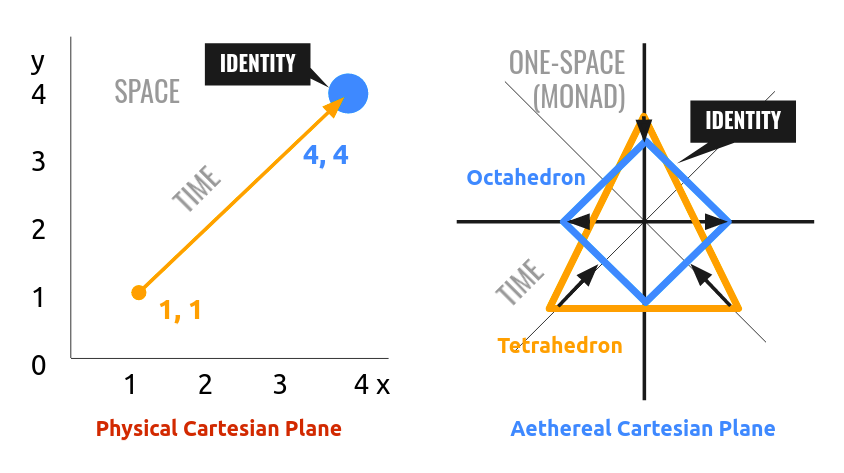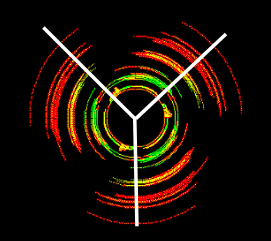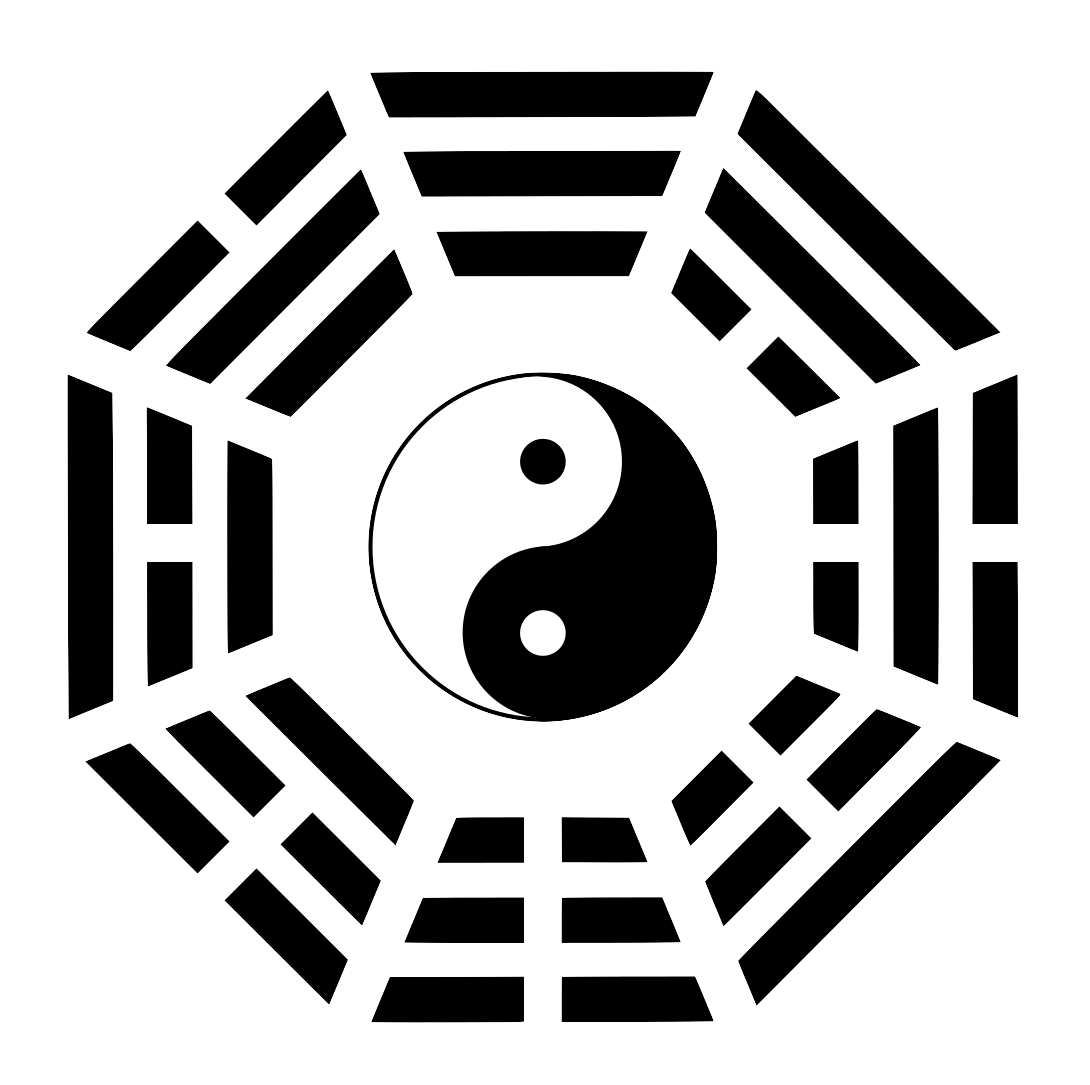The Upper, Middle, Lower Aethereal Sublayers
Table of Contents
We divide the Aethereal layer into 3 sublayers according to the 3 guna model:
| Sublayer | Medium | Substance | Quantum | |
|---|---|---|---|---|
| Upper | Existence Space (moa1) | Physical Existence (soa1) | subtlifying (qoa1) | |
| Middle | Identity Space (moa2) | Identity (soa2) | transforming (qoa2) | |
| Lower | Perception Space (moa3) | Relation (soa3) | crudifying (qoa3) |

We plot their movements in 2 Cartesian planes:
| Sublayer | Cartesian Plane | Purpose |
|---|---|---|
| Identity Space | Aethereal Cartesian Plane | Visualizations of aethereal movement and probabilistic quantum mechanics |
| Perception Space | Material Cartesian Plane | Visualizations of relations (classical mechanics) and probabilities (quantum mechanics). This is already used in algebra and calculus for the movement of identities, as matter |

The Material Cartesian Plane
The Material Cartesian Plane plots movement according to a relation between 2 ideas. Usually, it is something relative to time. But below, it is the relation between the idea of “interest rate” and the idea of “output”. As this is already used and well known there is no need to discuss this.

The Aethereal Cartesian Plane
The Aethereal Cartesian Plane is a polar coordinate that is used in the Identity space to expose the properties and dynamics of the identity as it changes through its relations with other identities.
It has a single origin space or point that has a circumference or area that changes per unit of time. And so it is used:
- in Material Superphysics to plot the timespace particle primarily for levitation and teleportation
- in Bio Superphysics to plot an organism’s possible disease or imbalance
- in Social Superphysics to plot a person’s match or mismatch with a career, job, political affiliation, lover, etc
It is similar to an MP3 visualizer that shows the different frequences relative to, and around, the central point.

The aethereal Cartesian plane follows the same pattern by visualizing the data directly. From there the equations can be derived in order to predict or change the movement of the identity in question.
This is also consistent with sound being the main medium of the aether.
You could say that the Material Cartesian Plane plots the relations between 2 ideas, the Aethereal Cartesian Plane plots the relations of an identity with itself. This is because, in Cartesian Physics, time is made up of independent moments, and therefore space is made up of independent slices.
This is why a soul is made up of different selves, matching David Hume’s description. The Aethereal Cartesian Plane plots these selves to get a better picture of the soul (which leads to the Existence space).
The Material Cartesian Plane plots the relations between 2 ideas, the Aethereal Cartesian Plane plots the relations of an identity with itself
How We Got It
We came up with this plane after going through the works of Timeaus and Pythagoras on the Platonic shapes.
It is easy to notice that these are abstract metaphysical shapes and not physical ones.
This is supported by Cartesian Physics which assigned shapes to virtual particles.
What is the shape of these small particles, which I will call striated particles. The middle of 3 air-aether globules touching each other create narrow triangular spaces. These striated particles must take on a triangular shape in their width and height when they pass through these.
Rene Descartes
Principles of Philosophy, Part 3, Article 90
The main problem of the 18th century was they confused Descartes’ “subtle” matter with air and physical matter. They had no concept of virtual or abstract particles that are not detectable by sight nor touch.
But the core Superphysics team is made up of people who practice Buddhism and Yoga and so the concept of subtle particles is easy to understand, just as chi and chakras are subtle particles and phenomena.
We saw a match with the Greek shapes to the bagua of Taoism and the mandala of Hinduism so we realized that polar coordinates were the best way to visualize the spaceless and timeless aether or akasha.

The Aethereal Internal Boundary
We call the Aethereal Internal Boundary as the edge of identity. This separates identities from other identities and from non-discrete existence.
As this is purely theoretical, we will discuss this more in Social and Spiritual Superphysics.
How I Got Proof for the Aethereal Internal Boundary
After finishing a deep meditation, people usually feel light headed and problem-free which is analogous to feeling subtle instead of crude.
I walked out of my room in such a state. Then suddenly I felt an abstract fuzzy cloud coming into the direction of my mind. I felt it enter my mind. Then my mind was able to associate it with one of its preexisting ideas from memory. And so that abstract cloud transformed into an idea that I already knew.
This all happened with a few seconds.
While the idea was an external cloud, I literally had no idea what it was. All I could feel was that something abstract, discrete, and fuzzy (undefined and vibrating or fluctuating) was coming my way.
It only acquired a meaning and a known idea when it entered my mind. I assume that my brain picked up the cloud and matched it to an existing memory that it had, then brought that up to my conscious mind.

It was only after reading Descartes’ Treatise on Man did I understand that the idea-cloud was the aether traveling with space particles, giving it the discrete yet fuzzy cloud shape. And that it was converted by my mind’s chi or animal spirits into an aethereal idea-body by going through my brain for a frequency match – the animal spirits converted themselves into that idea-body upon receiving that idea-cloud.
The transition between external idea-cloud to internal idea-body meant that there was a boundary to cross within the same aethereal strata and spatial strata. We then integrated this boundary system to the 3 gunas, which is already an established principle.
Then we applied it to:
- the Layer Model of Material Superphysics, and
- the Elements Model of Bio Superphysics